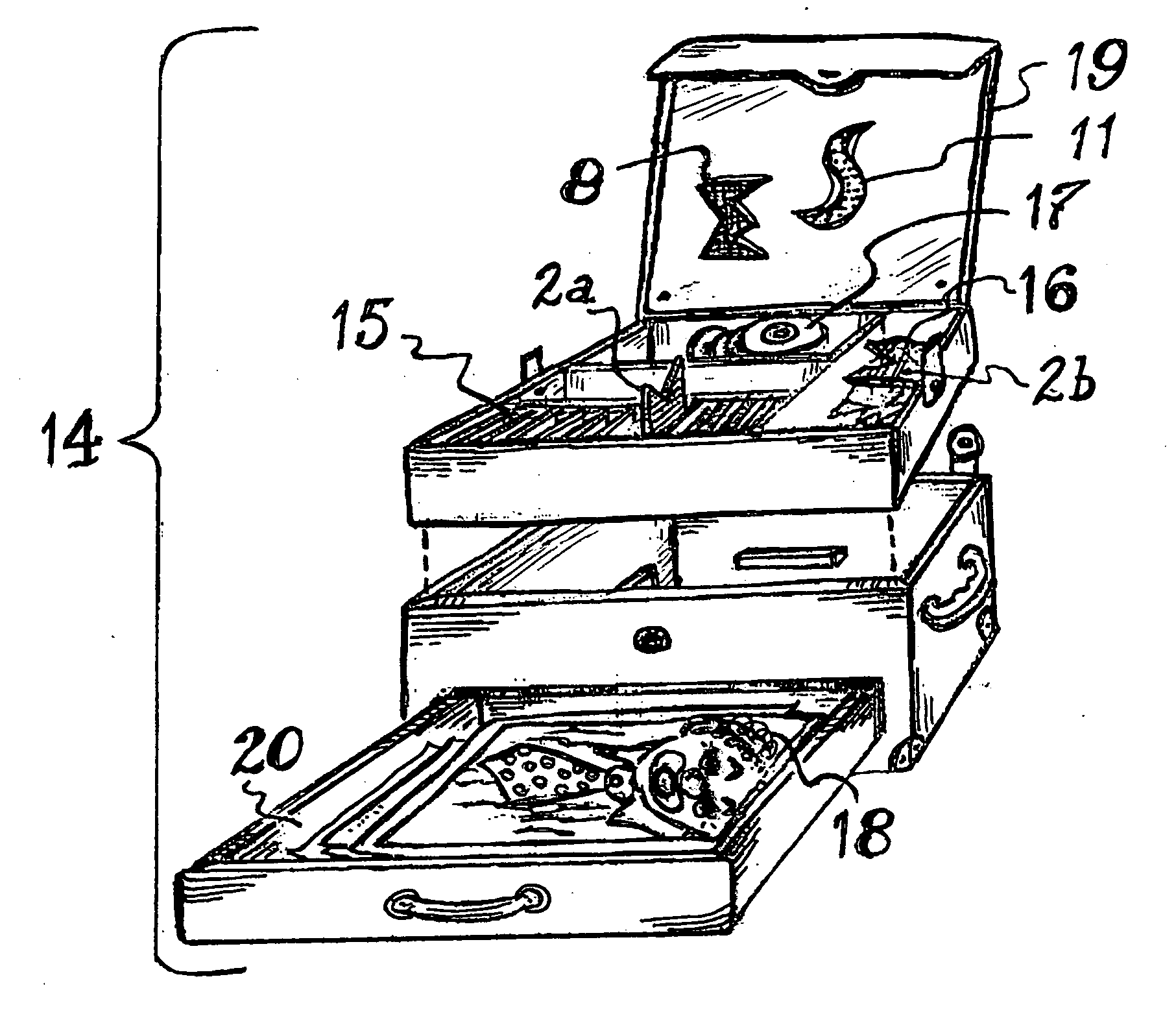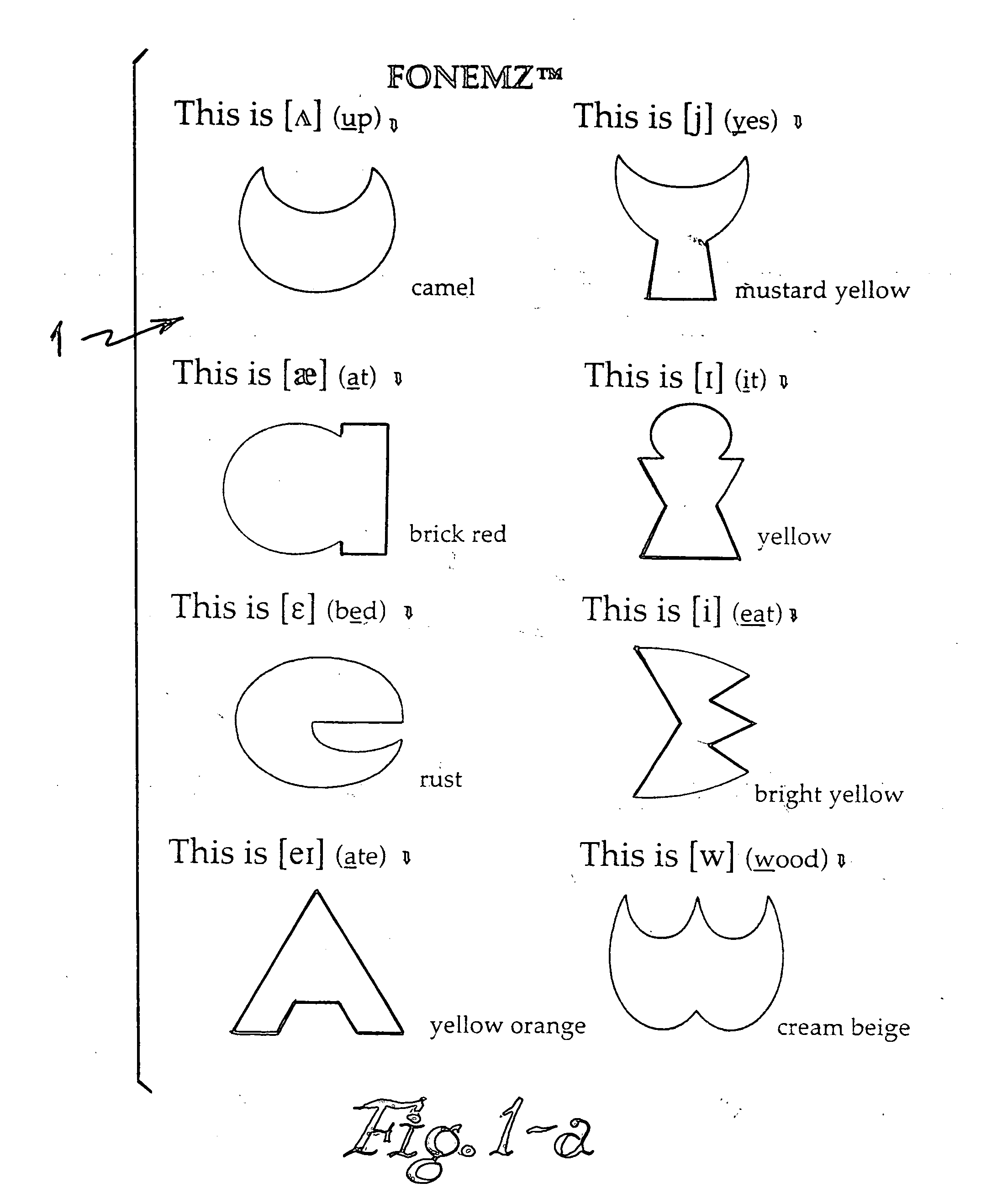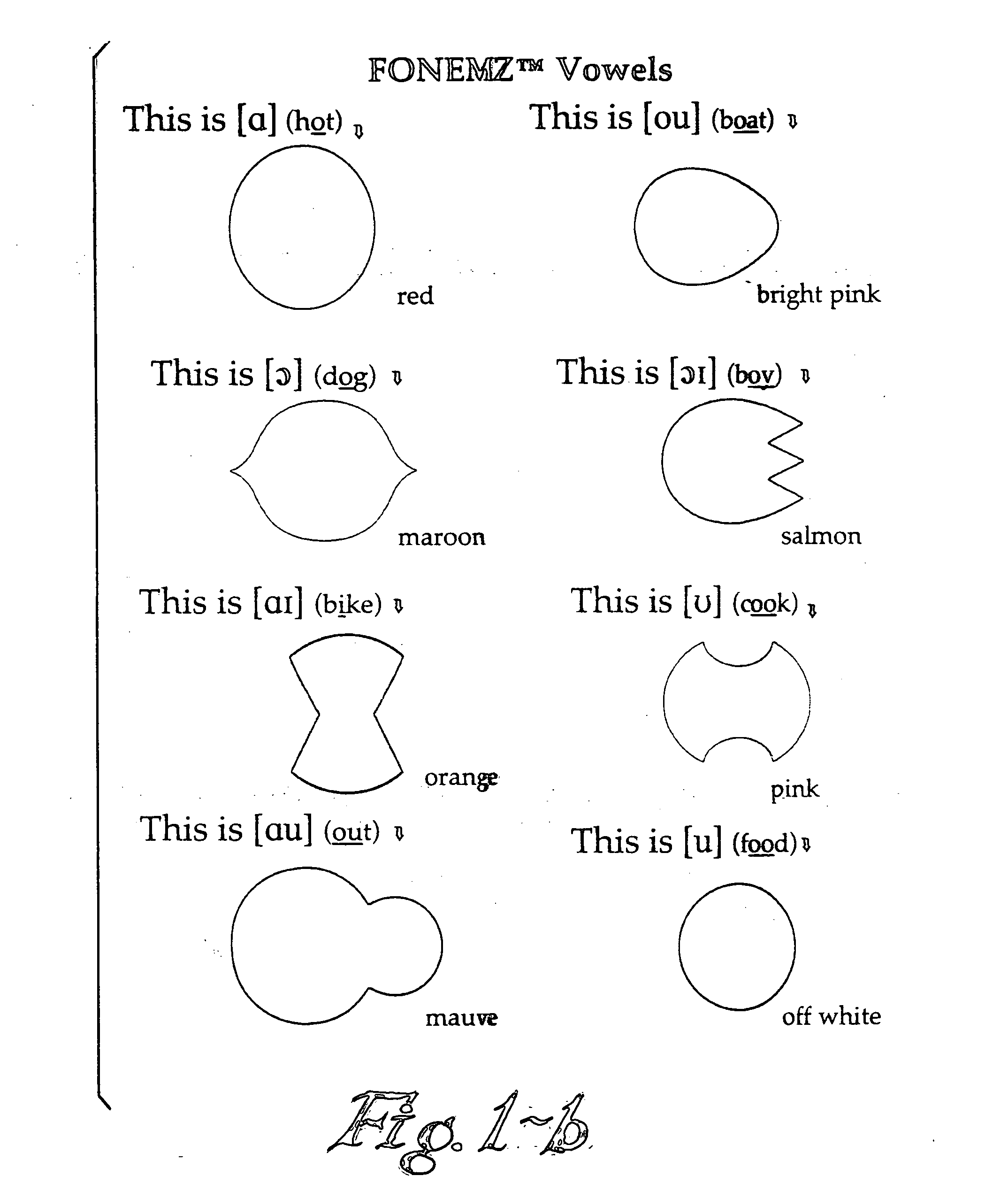System and process for teaching speech to people with hearing or speech disabilities
a technology for applied in the field of education, can solve the problems of inability to teach speech to people with hearing or speech disabilities, and inability to understand the speech of deaf children, etc., and achieve the effect of avoiding the development of speech that is unintelligible to an unsophisticated public or not speaking at all
- Summary
- Abstract
- Description
- Claims
- Application Information
AI Technical Summary
Benefits of technology
Problems solved by technology
Method used
Image
Examples
Embodiment Construction
[0054] This invention provides a two and three dimensional sound representational system, and the method or process for utilizing said system. The invention is for presenting the concept of speech sound production to people of any age having severe to profound hearing impairments or other disabilities limiting speech capabilities. The present system and process, described as the invention herein, can be utilized alone or in conjunction with known or conventional methods and tools for teaching individuals phonemic awareness and articulation of speech sounds.
[0055] The very young, hearing-challenged child is a principal target for this inventive process and system. As discussed above, children may be profoundly deaf from birth, and thus face the daunting challenge of learning to speak. Worse still, they must do this without auditory reception or recollection of sounds, familiar words or characters of alphabets, nor even the comforting sound of a parent's voice to emulate. Though part...
PUM
 Login to View More
Login to View More Abstract
Description
Claims
Application Information
 Login to View More
Login to View More - R&D
- Intellectual Property
- Life Sciences
- Materials
- Tech Scout
- Unparalleled Data Quality
- Higher Quality Content
- 60% Fewer Hallucinations
Browse by: Latest US Patents, China's latest patents, Technical Efficacy Thesaurus, Application Domain, Technology Topic, Popular Technical Reports.
© 2025 PatSnap. All rights reserved.Legal|Privacy policy|Modern Slavery Act Transparency Statement|Sitemap|About US| Contact US: help@patsnap.com



